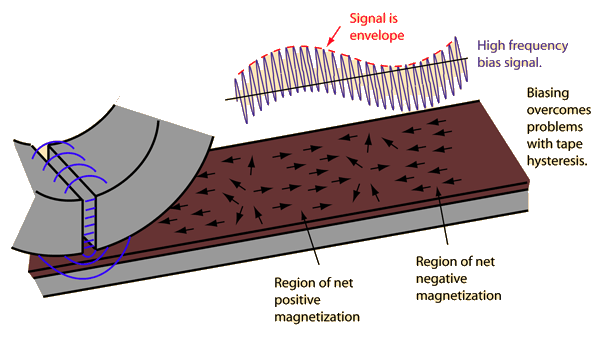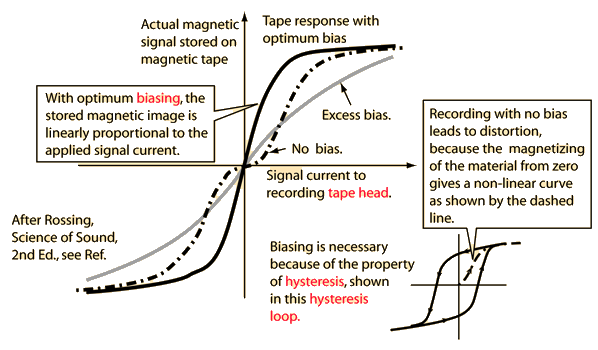Biasing in Tape Recording
A music signal alone cannot be used to produce a faithful tape recording of a sound because the magnetization of the tape is so sensitive to its previous magnetic history, even the effects of the signal recorded just ahead of it. A high frequency bias signal is typically applied to the tape through the tape head along with the music signal to remove the effects of this magnetic history. This large bias signal (typically 40 to 150 kHz in frequency) keeps "stirring" the magnetization so that each signal to be recorded encounters the same magnetic starting conditions. The necessity for biasing has its origin in the magnetic property called hysteresis - the magnetic material tends to hold onto any magnetization it receives and must be actively driven back to zero to start over. Magnetic emulsions made with chromium dioxide require a larger biasing signal to make use of their wider dynamic range, so modern recorders have different bias settings for iron oxide, chromium dioxide, and metal tapes. With optimum biasing, the recorded magnetic image is proportional to the signal current applied to the record head.
|
Index
Sound reproduction concepts
Tape recording concepts
Reference
Rossing
Science of Sound
Ch 21 |


